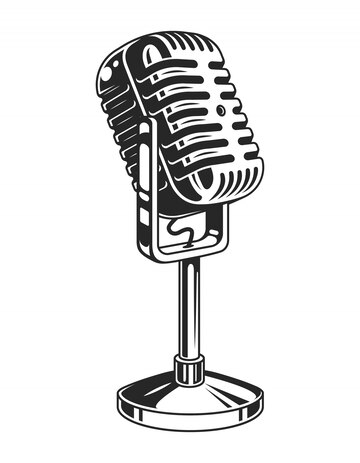When setting up a microphone for podcasts, streaming, recording, or broadcasting, one important piece of equipment that is often overlooked is the mic boom. A mic boom—also referred to as a microphone arm or stand—is essential for creating a clean, stable, and adjustable setup for your microphone. Whether you’re a professional sound engineer or an amateur podcaster, understanding the ins and outs of mic booms can make all the difference in optimizing your sound and comfort during use.
In this guide, we’ll dive into the importance of a mic boom, key features to consider, how to choose the right one for your needs, and more. By the end of this article, you’ll be equipped with all the knowledge you need to make an informed purchase.

What is a Mic Boom?
A mic boom is a mechanical arm designed to hold your microphone in place while allowing for adjustable positioning. It is typically mounted to a desk, ceiling, or wall, and allows users to position their microphone in the optimal spot without the need for a bulky or fixed stand. The primary benefit of a mic boom is its flexibility—allowing for easy adjustments and more efficient use of space.
Whether you’re recording vocals for a track, streaming a live video, or hosting a podcast, having a stable and adjustable mic boom can enhance your overall experience by ensuring the microphone is always in the best possible position.
Why Do You Need a Mic Boom?
For many content creators, sound quality is paramount. A good mic boom not only provides better stability and flexibility than traditional microphone stands, but it also minimizes distractions by eliminating vibrations or unwanted movements that can affect sound quality. Additionally, a mic boom frees up desk space, allowing for a more organized and efficient workstation.
Other reasons why you should invest in a high-quality mic boom include:
- Ergonomics: A mic boom helps position your microphone at the perfect angle, which can reduce strain on your neck, back, and shoulders.
- Noise Reduction: By allowing for proper isolation, mic booms can reduce background noise and vibrations, resulting in clearer sound recordings.
- Versatility: Adjustable features make it easy to move your mic closer or farther from your mouth, ideal for different types of audio work.
Key Features to Look for When Choosing a Mic Boom
Not all mic booms are created equal. Depending on your specific needs, there are a few essential features to look for in a high-quality mic boom.
1. Weight Capacity and Compatibility
Ensure the mic boom is capable of supporting your microphone’s weight. Lightweight microphones can often be paired with less heavy-duty booms, while larger, professional-grade microphones will require stronger, more robust booms with higher weight limits.
2. Adjustability and Reach
The length of the boom arm and the range of motion are essential. Mic booms should provide flexible movement for different positions and angles. Most booms have adjustable arms, so make sure to choose one that fits comfortably within your workspace and allows you to get the perfect mic placement.
3. Stability
A stable mic boom is crucial, especially if you work with delicate or expensive microphones. Consider booms with sturdy construction, It should ideally be made from durable materials like steel or aluminum., to guarantee long-lasting stability and strength.ideally constructed from durable materials such as steel or aluminum, to guarantee long-lasting stability and strength.
4. Mounting Options
There are typically three mounting options: desk clamp, screw-in mount, and desk-mounted stand. Depending on your setup, one may be more convenient than the others. Desk clamps are more versatile and can be easily moved, while screw-in mounts may provide a more permanent solution.
5. Noise and Vibration Dampening
Good mic booms come equipped with built-in features that help reduce unwanted noise and vibrations. Look for models with shock mounts or damping systems that prevent vibrations from transferring to your microphone and affecting your audio quality.
Types of Mic Booms
There are various types of mic booms available, each designed to serve different purposes. Here are the most common types:
1. Tabletop Mic Booms
Tabletop mic booms are mounted directly onto the desk and are popular for podcasts, streamers, and home studios. They offer easy adjustment and provide great flexibility for a variety of microphone positions.
2. Ceiling-Mounted Mic Booms
For those with limited desk space or specific setup requirements, ceiling-mounted mic booms are an excellent choice. These booms provide extra reach without taking up valuable desk space, but installation can be more complex than standard desk-mounted options.
3. Floor Mic Booms
Often used in professional sound setups or broadcast studios, floor-mounted booms are ideal for situations where the microphone needs to be positioned from a greater distance. These booms are more durable but less flexible for typical home use.
How to Choose the Best Mic Boom for Your Setup
Choosing the right mic boom can be overwhelming with so many options available. Here’s a breakdown of some factors to keep in mind to make sure you select the best one for your needs.
Step 1: Determine Your Purpose
First, understand how you plan to use the mic boom. For podcasting and streaming, a lightweight and adjustable mic boom will suffice. However, if you are recording music or working in a professional environment, you may want a higher-end model with more durability and support for larger microphones.
Step 2: Consider Desk Space
If you have limited desk space, opt for a mic boom with a compact design and adjustable features. Look for desk-mounted models that offer easy installation and flexibility. Alternatively, a ceiling-mounted boom can save you space and offer a clean, minimalist look.
Step 3: Set Your Budget
Mic booms come in a wide range of prices, from budget options to professional-grade models. While higher-end booms typically offer better durability, adjustability, and noise control, there are still excellent mid-range models that provide great value for money.
Step 4: Look for Customer Reviews
Always read customer reviews and testimonials before purchasing a mic boom. Real-world feedback will give you insight into the quality, ease of use, and reliability of the product.
READ ABOUT- The Three Blind Mice in Shrek: A Hilarious and Iconic Fairytale Twist
FAQs About Mic Booms
1. What is the best mic boom for podcasting?
The best mic boom for podcasting is one that offers smooth adjustability, durability, and noise dampening. Popular options include the Heil Sound PRSM-B Shock Mount and the Rode PSA1 Swivel Mount Studio Microphone Boom Arm.
2. How do I install a mic boom?
Installation typically involves clamping the mic boom to your desk or mounting it via screws or brackets. Be sure to follow the manufacturer’s instructions, and ensure your desk or mounting surface is sturdy enough to support the boom.
3. Can I use any mic boom with any microphone?
Not all mic booms are compatible with every microphone. Check the boom’s weight and size compatibility with your mic.. Some microphones may also require a specific shock mount for proper attachment.
4. How do I prevent my mic boom from wobbling?
To avoid wobbling, choose a mic boom with a solid clamp or mount and ensure it is tightly fastened. Additionally, using a counterweight or adjusting the boom’s arm can improve stability.
5. What is the difference between a mic boom and a mic stand?
The primary difference is flexibility. A mic boom allows for easy adjustment and positioning in multiple directions, while a mic stand is more stationary and doesn’t offer the same level of movement or space-saving benefits.
Conclusion
A mic boom is an essential tool for anyone serious about audio quality. Whether you’re a podcaster, streamer, musician, or voiceover artist, choosing the right mic boom can significantly improve your recording setup by providing better sound quality, comfort, and stability. By understanding the different types, features, and how to choose the right one, you can ensure that your microphone remains in the ideal position for all your audio projects.
Remember to consider your specific needs, budget, and workspace when selecting a mic boom, and don’t forget to check customer reviews for real-world insights. With the right mic boom, you’ll have a more professional setup that not only enhances your sound quality but also contributes to a more efficient and comfortable recording experience.

